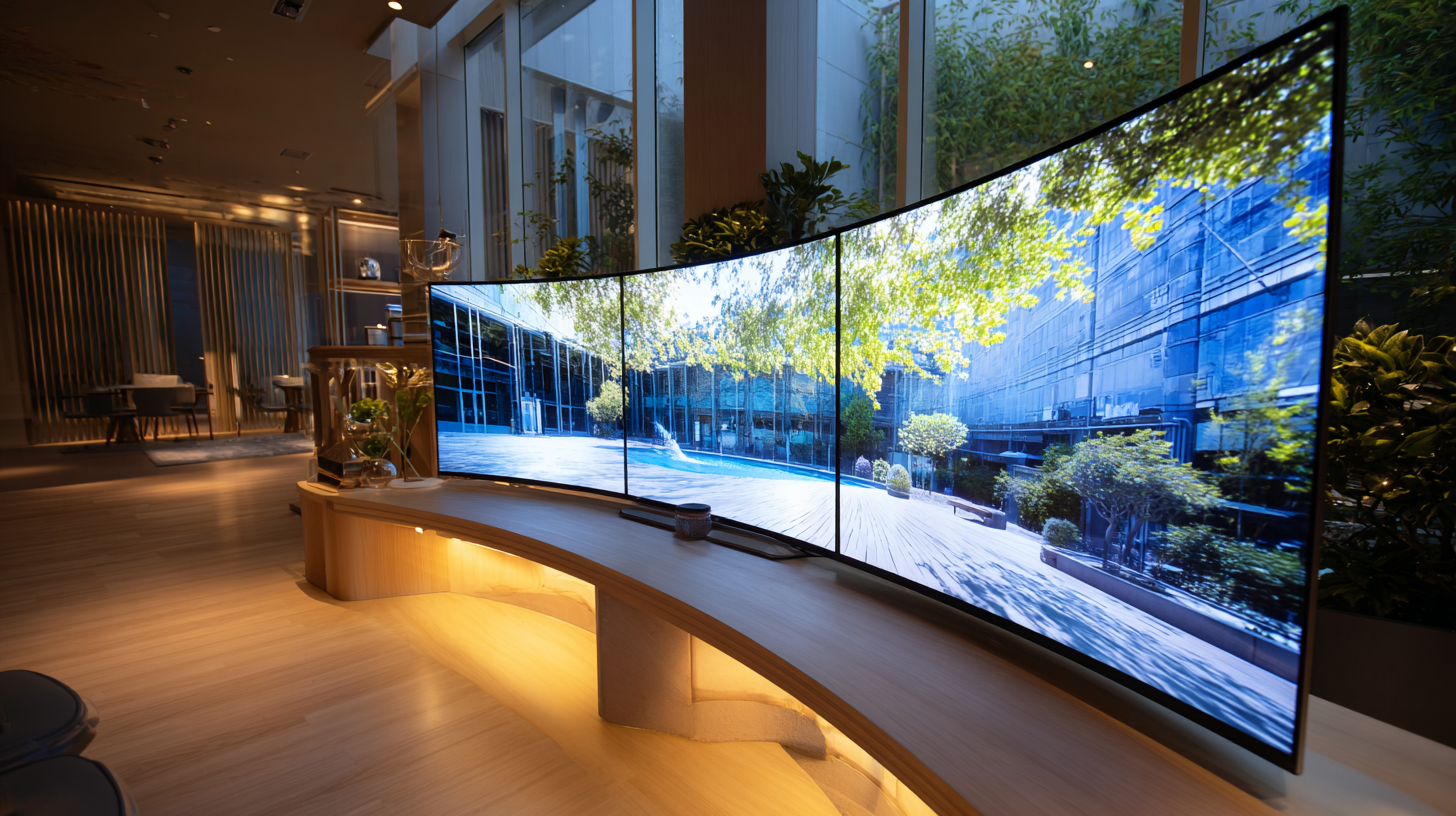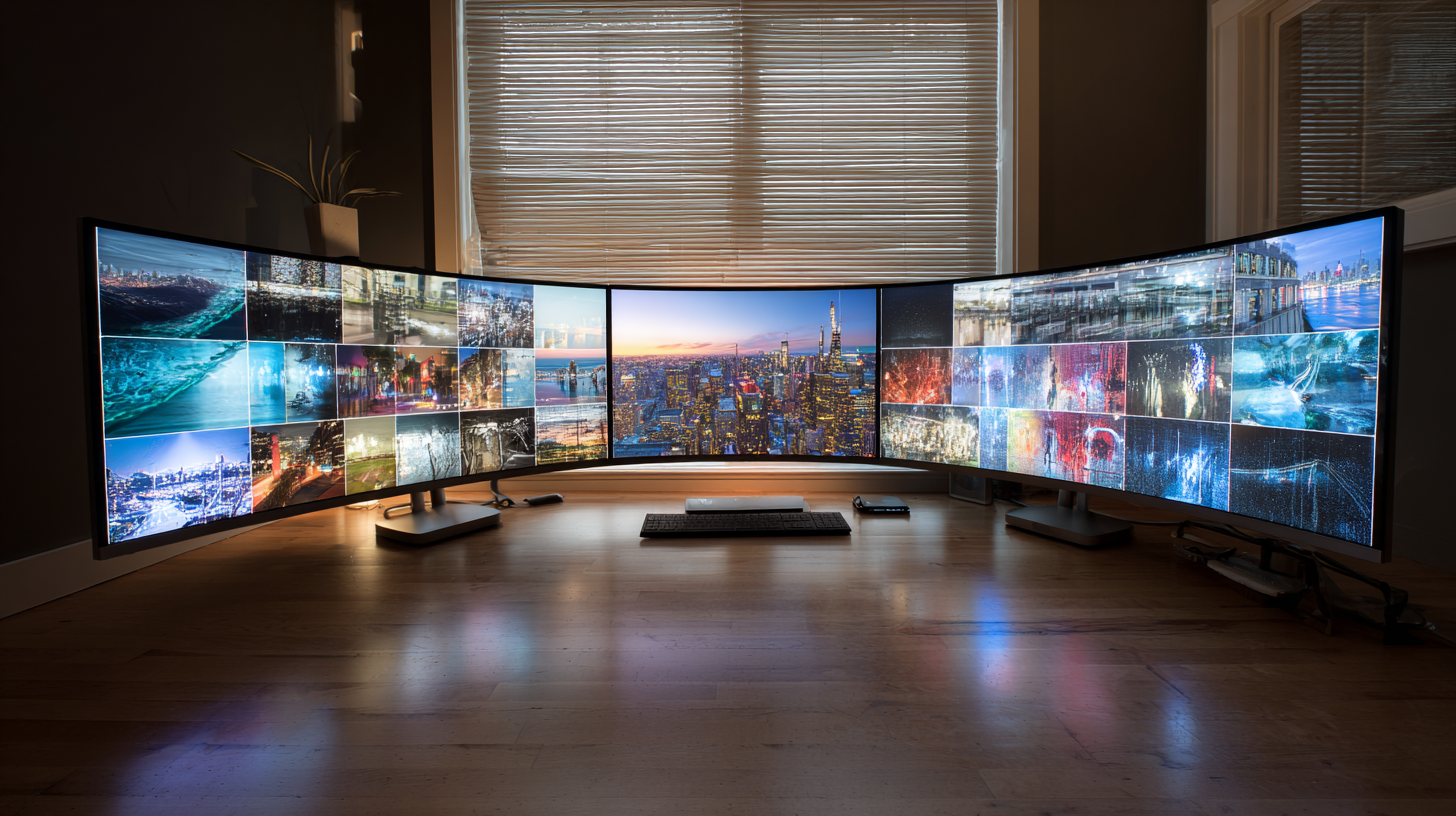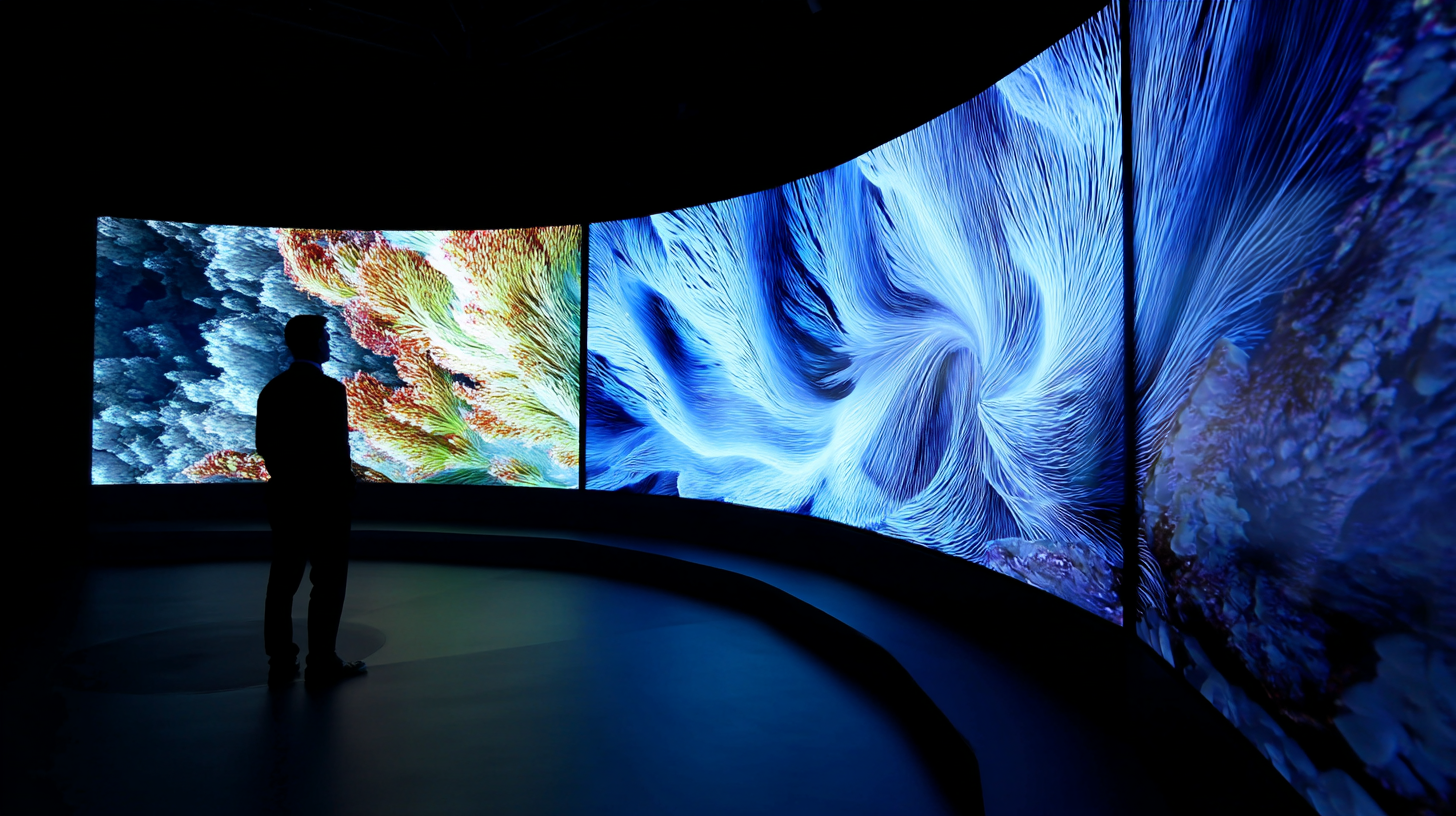
-
Home
-
Products
-
About Us
-
Case
-
News
-
BLOG
-
FAQ
-
Contact Us
Leave Your Message

As we look towards 2025, the rapid evolution of technology continues to shape the way we interact with visual media, pushing boundaries and redefining user experience. One of the most exciting advancements in this realm is the growing prominence of Curved Screen technology, which not only enhances immersion but also offers innovative design solutions that cater to both aesthetic and functional needs.

With the global demand for curved displays expected to surge, industries are seeking to adapt and integrate these cutting-edge screens into various applications, from gaming and home entertainment to professional workspaces. This blog will explore the emerging trends that are influencing the Curved Screen market in 2025, as well as the solutions that manufacturers and consumers are adopting to harness the full potential of this transformative technology.
Join us as we delve into the future of visual experiences and uncover what lies ahead for Curved Screen innovations.
As we move towards 2025, the landscape of curved screen technology is being shaped by several emerging technologies that promise to enhance user experience and drive demand. One significant trend is the advancement in OLED and microLED technologies, which provide superior color accuracy and contrast ratios. According to a report by MarketsandMarkets, the global OLED market is expected to reach $27 billion by 2025, with growing applications in curved displays across televisions and smartphones. This surge is largely driven by consumer demand for more immersive and visually striking displays, which are best served by curved form factors that offer a wider field of view.
Furthermore, innovations in flexible display technology are enabling manufacturers to create products that are not only curved but also adaptable to various industrial applications. Research by Grand View Research indicates that the flexible display market is projected to grow at a compound annual growth rate (CAGR) of 24.5% from 2021 to 2028. This progress allows for the creation of unique designs that meet diverse consumer needs, from gaming monitors to automotive displays. As we approach 2025, these advancements will likely redefine how consumers interact with their devices, making curved screens not just a preference but an essential element in display technology.
| Trend | Description | Market Impact (%) | Emerging Technology | Projected Growth (2025) |
|---|---|---|---|---|
| Increased Consumer Preference | More consumers are opting for curved displays in home and professional setups. | 35% | OLED Technology | 20% |
| Enhanced Gaming Experience | Curved monitors are becoming essential for immersive gaming environments. | 40% | Quantum Dot Technology | 15% |
| Adoption by Content Creators | Increased use of curved screens among content creators for better visual field. | 25% | Curved LED Technology | 18% |
| Multi-Screen Setups | Surge in usage of curved displays in multi-screen configurations. | 30% | Flexible Display Technology | 22% |
| Health Awareness | Growing awareness regarding eye strain, leading to preference for curved screens. | 20% | Anti-Glare Technology | 10% |
The global demand for curved screen technology is increasingly driven by several key factors, including immersive viewing experiences and advancements in display technology. According to a recent report by TechNavio, the global curved display market is projected to grow at a CAGR of over 12% from 2022 to 2025, fueled by rising consumer interest in high-quality visual experiences across entertainment and gaming sectors. Curved screens provide a more engaging viewing experience, drawing viewers in and enhancing their overall perception of depth.
Moreover, the escalation of smart home technologies and the push for enhanced gaming setups further contribute to this trend. A survey by Grand View Research found that 60% of gamers prefer curved screens for their ability to create a wider field of view, which is pivotal in competitive scenarios. As manufacturers continue to innovate, the development of OLED and QLED technologies has also made curved screens more accessible, providing brighter colors and deeper contrasts that appeal to a broader audience.
**Tips:** When considering a curved screen for your home or gaming setup, look for models that offer adjustable settings to accommodate different viewing angles. Additionally, pay attention to the curvature radius; a more pronounced curve tends to enhance immersion but may not suit all applications. Finally, explore options with advanced connectivity features to future-proof your investment as smart devices continue to proliferate.

 The rapid evolution of technology has made curved screens a prominent player in the market, offering an immersive viewing experience that flat screens cannot match. As we approach 2025, manufacturers are focusing on innovative solutions to enhance the performance of curved screens. Technologies like OLED and quantum dot displays are being integrated to improve color accuracy and contrast ratios, catering to the growing consumer demand for superior visual quality. Additionally, advancements in manufacturing processes such as precision molding and flexible display technology are paving the way for slimmer and more versatile designs, making curved screens not only aesthetically pleasing but also functionally superior.
The rapid evolution of technology has made curved screens a prominent player in the market, offering an immersive viewing experience that flat screens cannot match. As we approach 2025, manufacturers are focusing on innovative solutions to enhance the performance of curved screens. Technologies like OLED and quantum dot displays are being integrated to improve color accuracy and contrast ratios, catering to the growing consumer demand for superior visual quality. Additionally, advancements in manufacturing processes such as precision molding and flexible display technology are paving the way for slimmer and more versatile designs, making curved screens not only aesthetically pleasing but also functionally superior.
Moreover, sustainability has become a critical focus in the manufacturing of curved screens. Companies are exploring eco-friendly materials and production methods, aiming to reduce waste and energy consumption in the production process. Innovations like recycled materials and energy-efficient manufacturing techniques are being adopted to minimize the environmental footprint. As the market for curved screens continues to expand, these innovative solutions will be essential in meeting consumer expectations while also addressing sustainability concerns, ensuring that the technology remains relevant and responsible in the coming years.
The growing popularity of curved screen technology is shaping consumer preferences and driving its widespread adoption in the market. As the demand for enhanced viewing experiences increases, consumers are gravitating towards devices that offer immersive visual enjoyment. Curved screens, with their ability to provide a more natural field of view and reduce distortion, have emerged as a preferred choice for gamers and cinephiles alike. This shift in consumer behavior is predicted to significantly influence the computer monitor market, which is expected to grow at a compound annual growth rate of over 6.9% from 2025 to 2032, surpassing USD 83.82 billion by 2032.
In addition to superior viewing quality, the growing awareness of ergonomic benefits associated with curved screens is also contributing to their adoption. As more individuals prioritize comfort during extended usage, features that minimize eye strain and enhance posture are becoming central to consumer decision-making. The convergence of these factors illustrates a transformative period for technology, as manufacturers respond to evolving preferences by innovating and refining curved screen options, ensuring that they meet the diverse needs of a discerning audience.
This chart illustrates the projected global demand for curved screen technology from 2023 to 2025. The increasing demand highlights changing consumer preferences that favor immersive viewing experiences.
As the technology behind curved screens continues to evolve, sustainability and eco-friendly practices are becoming central to their development. Manufacturers are increasingly focusing on reducing the environmental impact of production processes. This shift includes using recycled materials in screen manufacturing, which not only helps minimize waste but also promotes a circular economy. By integrating sustainable resources, companies can achieve the dual benefit of enhancing product quality while adhering to eco-conscious principles.
Additionally, research and development are steering innovations toward energy-efficient technologies. Modern curved screens are designed to consume less power without compromising performance, primarily through advancements in LED and OLED technologies. This commitment to sustainability not only appeals to environmentally conscious consumers but also positions companies as leaders in the competitive market. As global demand for curved screens rises, aligning technological advancements with eco-friendly practices will be crucial to fostering a sustainable future in the electronics industry.